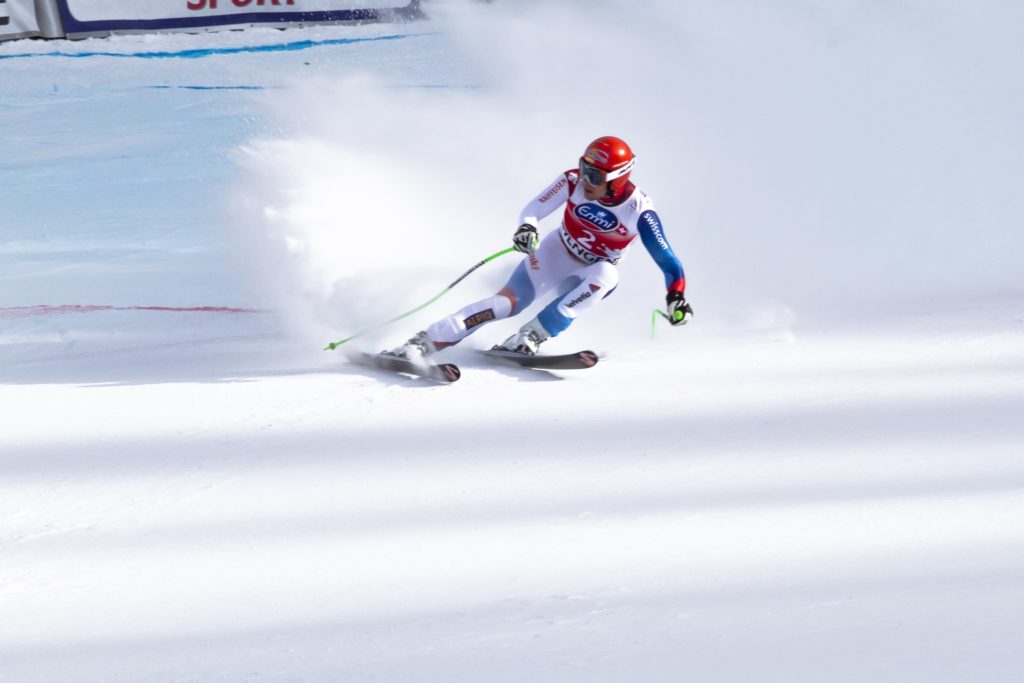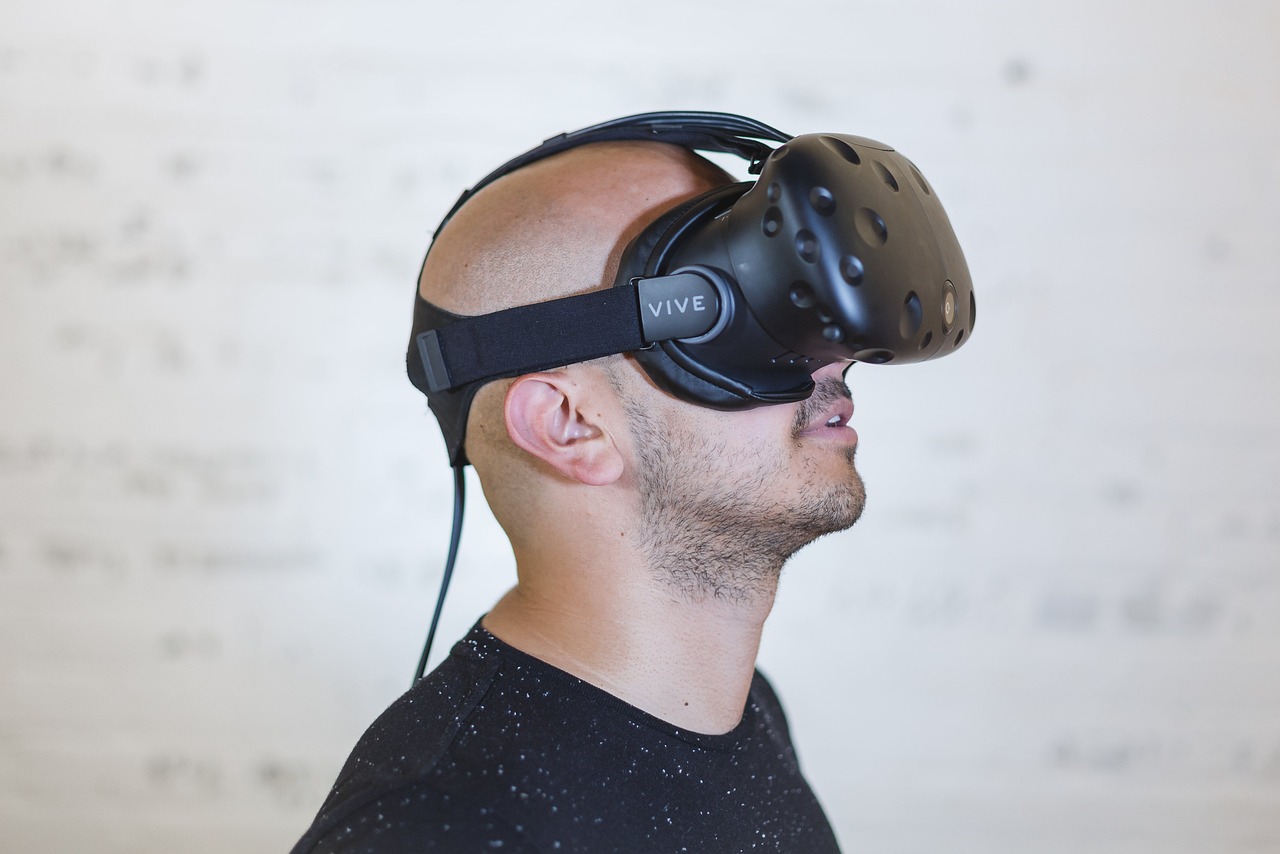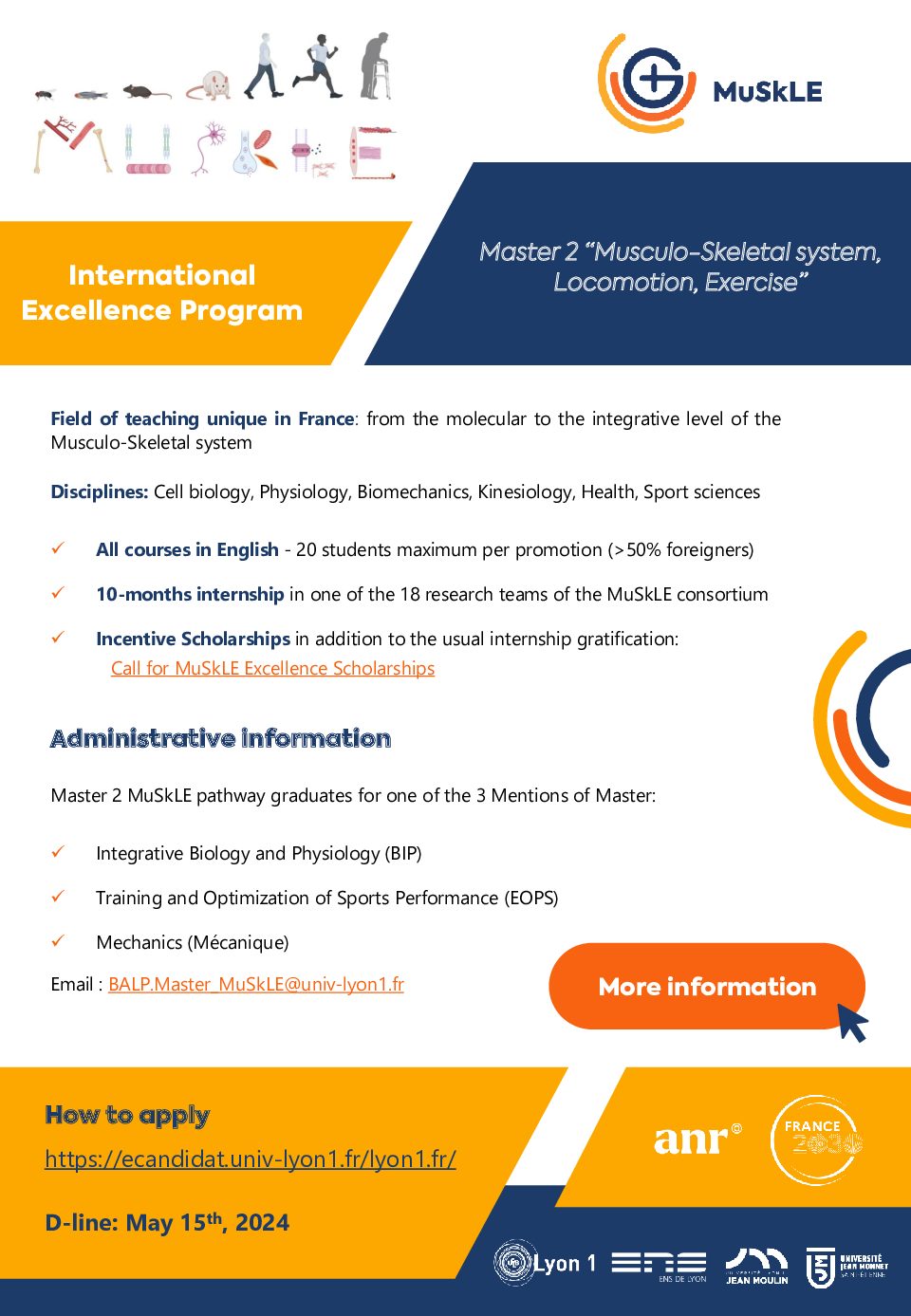Although the course in alpine skiing racing is imposed by gates behind which the skier must pass, different paths can be followed for the same objective tocross the finish line with the smaller possible time. The PhD project focuses on the analysis and understanding of the choice of these paths. Does a path involve too high mechanical requirement, which would require too high levels of force and/or muscle contraction?To answer this, the first objective will be to study the linkbetween the neuromuscular capacities of the skier (force production and neuromuscular coordination) and the path during a turn in alpine skiing. This will be done by studying the relationship between kinetics of the ski–snow interaction and the muscle activation dynamics in–situ during a race.From this knowledge, the second objective will be to extend this question over the duration of a race (and between the two runs of a race), by studying the influence of neuromuscular fatigue on the skier’s pathand on the kinetics of the ski–snow interaction. A race in alpine skiing lasts between 50 sec (slalom) and 2 min (downhill), is carried out at very high intensity, with high metabolic expenditure and eccentric and isometric muscular work. Such intensities and durations inevitably induce the appearance of fatigue during a race. However, no study, to our knowledge, explains how fatigue changes the way to ski, the way to produce force and the way to use the muscles for this force production. Our hypothesis is that the decrease in the capacity to produce force implies that the force produced on snow will be different (altered and/or modified), as well as the muscle activation dynamics (in terms of intensity and/or coordination) and the path strategies.






